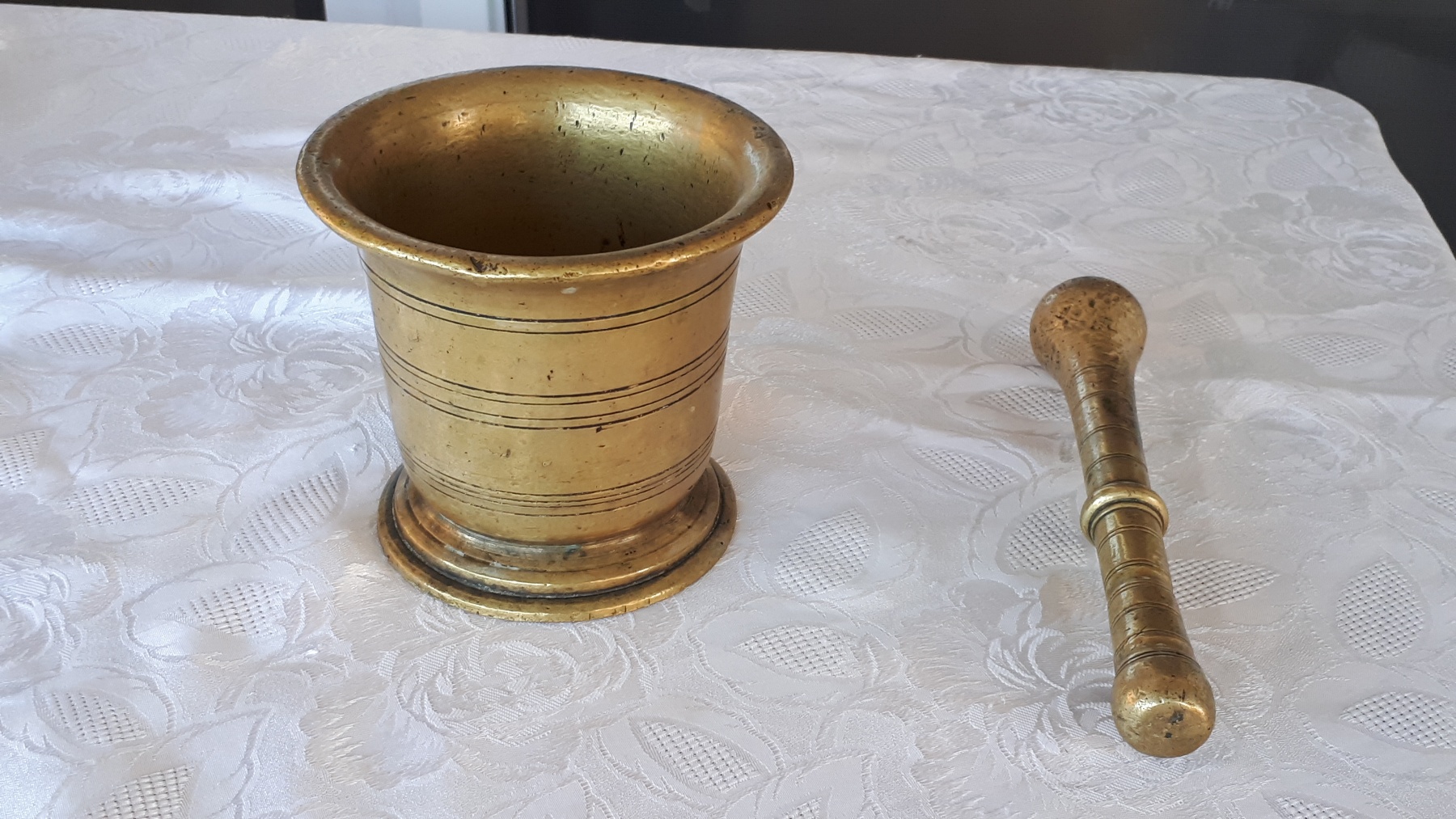Two families, Karras and Anastasiadou, became refugees in 1922 when they were forced to leave Peristasi (Şarköy) in Eastern Thrace, a seaside village in Marmara, in the province of
Raidestos (Tekirdağ). Most of the refugees from Peristasi settled near the railway station of Katerini and proceeded to give the area, which is now a suburb of Katerini, the name of their
village. Some refugees from Peristasi also settled in Thessaloniki. Among them, the families
Karras and Anastasiadou who settled in the area of Ano Toumpa, in what was known as the
‘Settlement’. The Anastasiadou family arrived in Thessaloniki by boat and this bronze mortar
with its matching pestle were two of the few household items they managed to bring with
them.
The houses at the refugee ‘Settlement’ of Toumpa were actually shanties made of adobe, tar paper and a tiled roof built on a wooden frame. Many families also lived in ‘tôles’, military constructions out of sheet metal and wood left over from the First World War and later used
as refugee housing. In 1939, Rigas Karras, who was a builder and roofer, managed to
complete the construction of a refugee house on the site of the original shanty at 51 Tyrolois
Street. The Karras family shared this house with members of their extended family. Among
them was Sgouroula Anastasiadou and her first cousin, Dimitra, who had been adopted by the Karras family at an early age. The mortar set was used by the families living at 51 Tyrolois Street and eventually was passed down to Dimitra and became part of her
household when she married Samouil Alexandridis (Iskenter), another refugee from Gürümze, Cappadocia, in 1946.
Following the tradition of extended family living together, Samouil and Dimitra Alexandridis raised four children in the house of 51 Tyrolois Street. Through the years, the bronze mortar
and pestle set was an integral part of the household’s food processing and cooking
equipment. Today, the set is still used by the family of their son Konstantinos Alexandridis and his wife, Evangelia.
Object description written by: Samy Alexandridis

